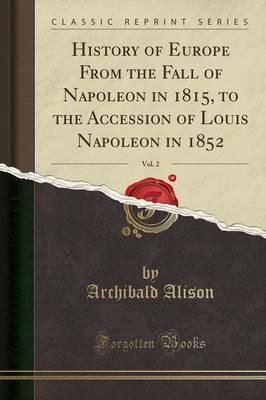Publisher's Synopsis
Excerpt from History of Europe From the Fall of Napoleon in 1815, to the Accession of Louis Napoleon in 1852, Vol. 2
Combinations - Re?ections on this subject. Causes of the Frequency of Strikes - System which must be adopted on the subject. - Its Ad vantages - Gloomy As ect of Affairs in the West Indies and Ireland. Ord Dudley's Picture of the Empire in the opening of 1825. - Picture of the Country from the Annual Register. - Picture of the Times from the Quarterly Review. - Sound Condition of Trade and Manufactures to the end of 1824. - Which was owing to the extended Cur reney. - Causes of Danger which were now im pending - Excess of Imports over Exports. Drain of Specie produced by the South Ameri can Speculations - The Chancellor of the Ex chequer's Budget. - Reduction of Taxation intro duced, and public Accounts of the Year. - Mr. Robinson's Argument in favor of the Reduction of the'duty on Spirits - Vast Increase of Crime which has arisen in consequence - Reflections on this subject.-temperance Leagues - Re newed Measures in favor of Free Trade - Great and wise Change in the Laws regarding our colo nial Shipping - Re?ections on this Decay. - Ap proach of the monetary Crisis - Dreadful Sever ity of the Crash. - Increased Circulation forced upon the Government. - The Crash was not ow ing to the Instability of the Banks, but to the mon etary Laws - Conclusions to be drawn from this Catastrophe.
About the Publisher
Forgotten Books publishes hundreds of thousands of rare and classic books. Find more at www.forgottenbooks.com
This book is a reproduction of an important historical work. Forgotten Books uses state-of-the-art technology to digitally reconstruct the work, preserving the original format whilst repairing imperfections present in the aged copy. In rare cases, an imperfection in the original, such as a blemish or missing page, may be replicated in our edition. We do, however, repair the vast majority of imperfections successfully; any imperfections that remain are intentionally left to preserve the state of such historical works.






